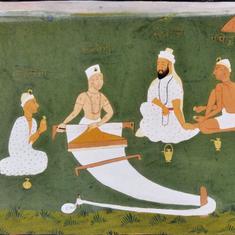Regional language publications remain the most-read ones in India, according to the Indian Readership Survey 2013. Hindi is the language of the three most-read publications, while the single most-read publication is by far is the Hindi-language daily 'Dainik Jagran', with 1.55 crore readers.
The top ten list has two Malayalam publications, with only one English-language publication, 'The Times of India', making the cut. While 'India Today' is the sole English magazine among the ten most-read magazines, five of the leading magazines are in Hindi and four in Malayalam.
As per IRS 2013, the ten most-read English papers have a combined readership of about 1.75 crore, which is about a fourth of the readership of the ten most-read Hindi papers. If there's one difference, it's that English newspapers tend to be read across the country. 'The Times of India', for instance, has a readership of 72.53 lakhs across India.
Despite this, the number of readers for English newspapers is relatively small. The leading Marathi daily 'Lokmat', despite being confined to Maharashtra, Goa and Indore, totes up 56.01 lakh readers or 77 per cent of the ToI's figures. The Malayalam daily 'Malayala Manorama' has a higher readership than the ToI -- 85.65 lakh.
The survey shows that the anxiety about the decline in regional languages is perhaps exaggerated. Previous IRS surveys have also shown that readers of regional languages are loyal to their papers.
What isn't clear from the IRS survey -- presumably, parts of it are not declared to the general public-- is how many of the youngest newspaper readers, those who have studied in English and who are picking up a newspaper for the first time, prefer English papers to regional language papers. So, it would be best to measure the correlation between language of schooling and choice of newspaper (and other factors that impact language-wise choice of publication) among the youngest readers of print publications today.
Circulation is the number of copies sold or given away, while readership is the number of readers. This figure is higher than circulation. While circulation is usually audited by an agency, readership is measured through sample surveys. The Media Research Users Council and Readership Survey Council of India, the agencies which commissioned the survey, say that IRS 2013 used more accurate survey methodologies than in previous years. The IRS 2013 covered 2,35,000 households all across India at the national, state, zonal and district level. For the first time, North Eastern states were covered as well. Only Assam had been covered in the previous editions of the IRS.










